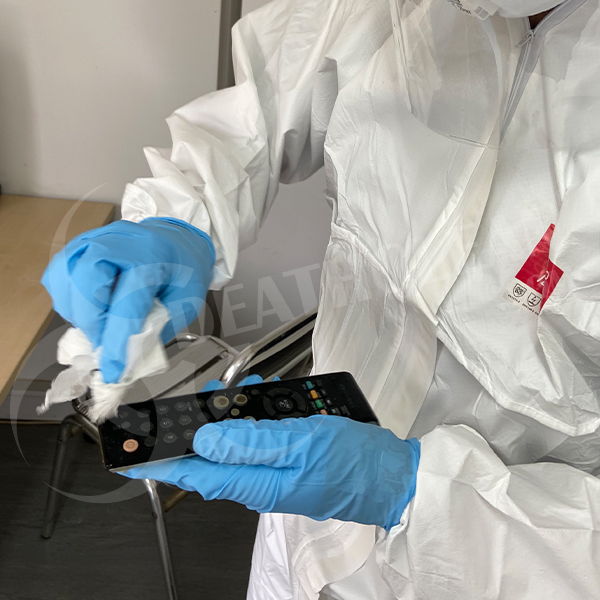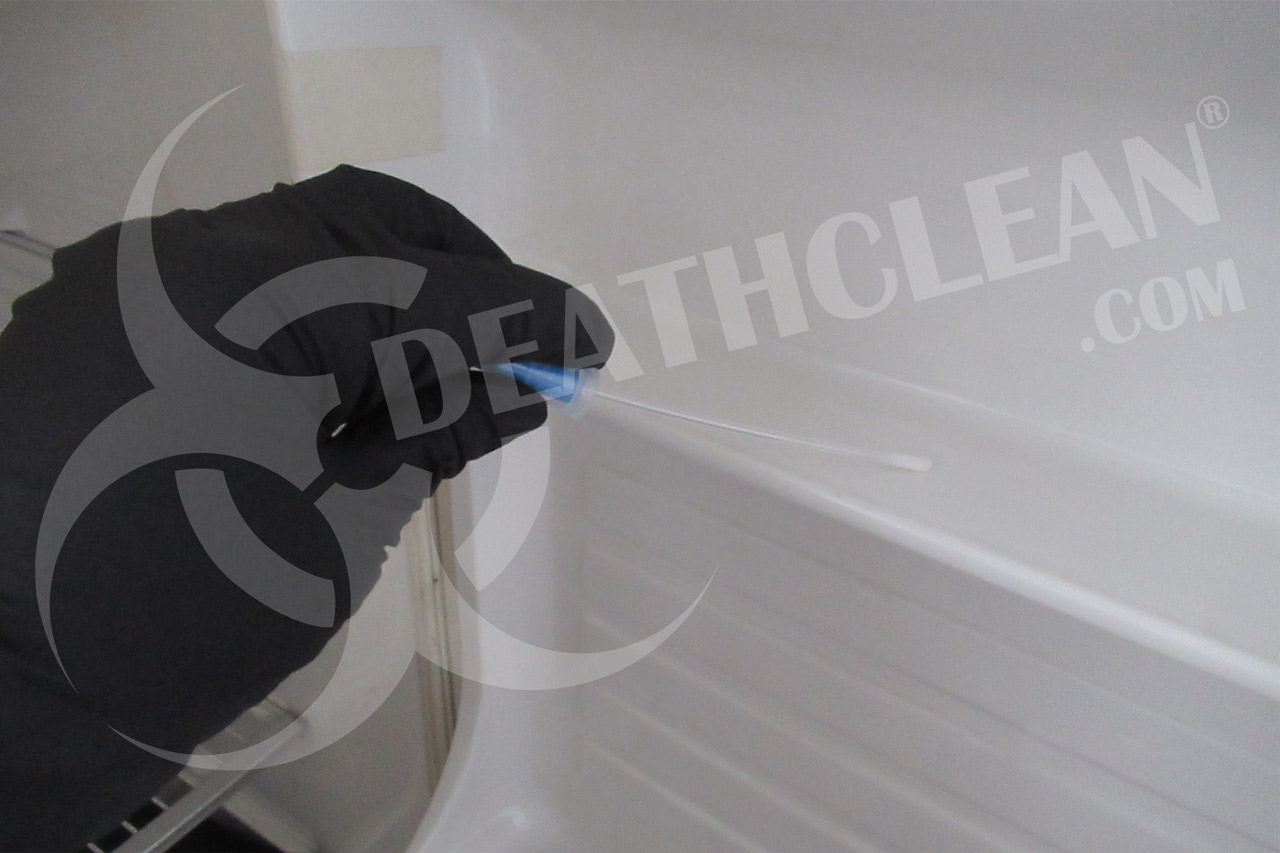Spaces contaminated with viruses must be carefully cleaned and disinfected, as they are considered places that pose a risk to human health. DEATHCLEAN® has specialized training to intervene in these spaces, holding all the legally necessary certifications.


Whatever the type of virus, the DEATHCLEAN® presents a set of products and techniques that guarantee the correct disinfection and elimination of existing viral biological contamination.
WHAT ARE THEY?

A virus is an organism much smaller than a fungus or a bacterium, which needs to invade a living cell to reproduce and which stands out mainly for the diseases caused in humans, such as the well-known COVID-19, the coronavirus pandemic, an infectious disease caused by the SARS-CoV-2 virus, where the DEATHCLEAN® , being the only company certified in biological risk, was the reference in Portugal in acting in contaminated sites, guaranteeing their total decontamination.

One of the problems in contaminated areas is that viruses are extremely small microscopic organisms, invisible and undetectable to the naked eye. Despite their low resistance to the environment, they can spread through contact with contaminated surfaces (fomites), if a person touches them and then touches a mucous membrane on the face.

What are the best known viruses?

Learn about some of the viruses that cause many diseases and serious infections:
HIV
Human immunodeficiency virus (HIV) infection is a viral infection that causes acquired immunodeficiency syndrome (AIDS). HIV is a retrovirus that spreads through bodily fluids such as blood, and it is possible to contract the virus through direct contact with the bodily fluids of infected people.
HIV
EBOLA
Ebola is a rare, serious, and often fatal disease caused by infection with one species of the Ebola virus. The natural reservoir of the Ebola virus is still unknown, but it is believed to be transmitted through direct contact with the blood or body fluids of infected people, as well as contaminated objects.
EBOLA
H1N1
Also called swine flu, it is a flu-like infection caused by the new influenza A virus (influenza A virus), which is much more virulent and can cause pneumonia or respiratory failure, and can even lead to death. It is transmitted directly from one individual to another or through contact with contaminated surfaces.
H1N1
HEPATITIS
Hepatitis is an inflammation of the liver. When it occurs, the liver cannot perform its functions, and the damage caused can progress to cirrhosis or cancer. Within the hepatitis viruses, there are six different types: A, B, C, D, E, and G. Hepatitis B is the most dangerous and serious, and can even be fatal.
HEPATITIS
NOROVIRUS
It's a highly infectious and resistant virus, capable of persisting on surfaces the infected person has come into contact with, facilitating transmission to others. It's responsible for viral gastroenteritis epidemics on ships and has a high mutational capacity, making it difficult to control.
NOROVIRUS
SARS-COV-2
COVID-19 is a respiratory disease caused by the novel coronavirus SARS-CoV-2. The virus spreads through close person-to-person contact, primarily through respiratory droplets produced when an infected person coughs, sneezes, or speaks. It can also occur through contact with contaminated surfaces.
SARS-CoV-2
How does transmission occur?


Virus


When someone infected with a virus coughs or sneezes nearby.

Through direct contact with contaminated objects or surfaces.

Physical contact with infected people or animals.

DID YOU KNOW…?

Viruses are classified, based on their genetic material, as DNA viruses or RNA viruses, depending on whether they use DNA or RNA to replicate. DNA viruses include, for example, parvoviruses, adenoviruses, and herpesviruses, while RNA viruses include, for example, SARS-CoV2, which causes COVID-19, and HIV (human immunodeficiency virus), which causes AIDS.
The life cycle of a virus is the set of stages in which that same virus enters a host cell, “reprogramming” the host, providing instructions in the form of DNA or RNA and using the host's resources to produce more viruses.
It's a term used to describe diseases caused by pathogenic viruses. Upper respiratory tract infections are probably the most common viral infections, such as influenza, pneumonia, and coronaviruses, including SARS-CoV-2. Other specific parts of the body are also affected by viruses, such as the gastrointestinal tract (caused by norovirus and rotavirus), the liver (hepatitis), the nervous system, and the skin.
Only specialized and certified companies such as DEATHCLEAN® can ensure the cleaning and disinfection of virus-contaminated areas using only professional cleaning products (disinfectant biocides) to ensure that all biohazard contamination (biological agents) is eliminated. Finally, a microbiological assessment will be carried out on all affected areas.
It is not empirically proven how long viruses survive outside the host, but the most important question is knowing after how long viruses are unable to infect cells again, given that each type of virus behaves differently in the environment.
Avoid contaminating yourself when trying to disinfect these areas, as viruses cannot be eliminated using common disinfectants or household cleaning. Disinfecting spaces contaminated by viruses requires knowledge and training, both in terms of techniques and products, andDEATHCLEAN® the only company that can offer a full guarantee for disinfecting these spaces.

 Certification
Certificationdeathclean intervention

THE DEATHCLEAN® holds all the necessary training and certification to work in places contaminated by biological agents, ensuring the removal of all contamination.

CLEANING
As a first step, we thoroughly clean all surfaces, ensuring that dirt is removed.

DISINFECTION
We guarantee the disinfection of all affected areas, using certified biocidal products.

ANALYSIS
We perform microbiological analyses, validating all the work and verifying the absence of contamination.

CERTIFICATION
We present a legally valid disinfection certificate attesting to the correct disinfection of the affected areas.
RELATED SERVICES

VIRUSES – CLEANING AND DISINFECTION
Spaces contaminated with viruses must be carefully cleaned and disinfected, as they are considered places that pose a risk to human health. DEATHCLEAN® has specialized training to intervene in these spaces, holding all the legally necessary certifications. Regardless of the type of virus, DEATHCLEAN® presents a set of products and techniques that guarantee the correct disinfection and elimination of existing viral biological contamination.
So, whether there has been a viral outbreak, such as the COVID-19 pandemic, or preventive disinfection is necessary, DEATHCLEAN® has all the necessary qualifications to deal with these types of situations in a professional, specialized and certified manner.
We handle all cases related to contamination by biological agents (viruses, bacteria, and fungi), including viral zoonoses such as hantavirus, Ebola, monkey herpes, rabies, and coronavirus, among others. These are diseases transmitted from animals to humans, directly or indirectly, where specialized cleaning and disinfection of all surfaces is essential.

WHAT ARE THEY?

Viruses depend completely on cells to reproduce.
A virus is an organism much smaller than a fungus or a bacterium, which needs to invade a living cell to reproduce and which stands out mainly for the diseases caused in humans, such as the well-known COVID-19, the coronavirus pandemic, an infectious disease caused by the SARS-CoV-2 virus, where the DEATHCLEAN®, being the only company certified in biological risk, was the reference in Portugal in acting in contaminated sites, guaranteeing their total decontamination.
One of the problems in contaminated areas is that viruses are extremely small microscopic organisms, invisible and undetectable to the naked eye. Despite their low resistance to the environment, they can spread through contact with contaminated surfaces (fomites), if a person touches them and then touches a mucous membrane on the face.
THE DEATHCLEAN®, as a certified company specialized in this type of situation, has all the necessary capacity to offer a professional service, carrying out excellent cleaning and disinfection of the space.

EXPOSURE TO VIRUSES
What are the most well-known and virulent viruses?

HIV

DENGUE

EBOLA

YELLOW FEVER

FLU

HEPATITIS

COVID-19
Fungi are defined as simple, microscopic organisms that are necessary for decomposing "dead matter," acting as "nature's decomposers." Molds produce microscopic cells called "spores," which are very tiny and lightweight, allowing them to travel through the air.
Living spores act like seeds, forming new mold growths (or colonies) when they encounter ideal conditions. Growths can often be seen as discoloration, ranging in color from white to orange and green to brown and even black. Most people believe mold/mildew only exists when they see it growing, but the fact is that mold spores are always present both indoors and outdoors.
What are the best known viruses?
Learn about some of the viruses that cause many diseases and serious infections:
HIV
Human immunodeficiency virus (HIV) infection is a viral infection that causes acquired immunodeficiency syndrome (AIDS). HIV is a retrovirus that spreads through bodily fluids such as blood, and it is possible to contract the virus through direct contact with the bodily fluids of infected people.
HIV
EBOLA
Ebola is a rare, serious, and often fatal disease caused by infection with one species of the Ebola virus. The natural reservoir of the Ebola virus is still unknown, but it is believed to be transmitted through direct contact with the blood or body fluids of infected people, as well as contaminated objects.
Ebola
H1N1
Also called swine flu, it is a flu-like infection caused by the new influenza A virus (influenza A virus), which is much more virulent and can cause pneumonia or respiratory failure, and can even lead to death. It is transmitted directly from one individual to another or through contact with contaminated surfaces.
H1N1
HEPATITIS
Hepatitis is an inflammation of the liver. When it occurs, the liver cannot perform its functions, and the damage caused can progress to cirrhosis or cancer. Within the hepatitis viruses, there are six different types: A, B, C, D, E, and G. Hepatitis B is the most dangerous and serious, and can even be fatal.
Hepatitis
NOROVIRUS
It's a highly infectious and resistant virus, capable of persisting on surfaces the infected person has come into contact with, facilitating transmission to others. It's responsible for viral gastroenteritis epidemics on ships and has a high mutational capacity, making it difficult to control.
Norovirus
SARS-COV-2
COVID-19 is a respiratory disease caused by the novel coronavirus SARS-CoV-2. The virus spreads through close person-to-person contact, primarily through respiratory droplets produced when an infected person coughs, sneezes, or speaks. It can also occur through contact with contaminated surfaces.
SARS-CoV-2
How does transmission occur?


When someone infected with a virus coughs or sneezes nearby.

Through direct contact with contaminated objects or surfaces.

Physical contact with infected people or animals.
How are viruses classified?
Viruses are classified, based on their genetic material, as DNA viruses or RNA viruses, depending on whether they use DNA or RNA to replicate. DNA viruses include, for example, parvoviruses, adenoviruses, and herpesviruses, while RNA viruses include, for example, SARS-CoV2, which causes COVID-19, and HIV (human immunodeficiency virus), which causes AIDS.
The life cycle of a virus is the set of stages in which that same virus enters a host cell, “reprogramming” the host, providing instructions in the form of DNA or RNA and using the host's resources to produce more viruses.
What are the types of viral infections?
It's a term used to describe diseases caused by pathogenic viruses. Upper respiratory tract infections are probably the most common viral infections, such as influenza, pneumonia, and coronaviruses, including SARS-CoV-2. Other specific parts of the body are also affected by viruses, such as the gastrointestinal tract (caused by norovirus and rotavirus), the liver (hepatitis), the nervous system, and the skin.
Who can eliminate contamination?
Only specialized and certified companies such as DEATHCLEAN® can ensure the cleaning and disinfection of virus-contaminated areas using only professional cleaning products (disinfectant biocides) to ensure that all biohazard contamination (biological agents) is eliminated. Finally, a microbiological assessment will be carried out on all affected areas.
How to fight viruses?
It is not empirically proven how long viruses survive outside the host, but the The most important question is knowing after how long the viruses are unable to infect cells again, given that each type of virus behaves differently in the environment.
Avoid contaminating yourself when trying to disinfect these areas, as viruses cannot be eliminated using common disinfectants or household cleaning. Disinfecting spaces contaminated by viruses requires knowledge and training, both in terms of techniques and products, and DEATHCLEAN® the only company that can offer a full guarantee for disinfecting these spaces.

deathclean intervention
THE DEATHCLEAN® holds all the necessary training and certification to work in places contaminated by biological agents, ensuring the removal of all contamination.

CLEANING
As a first step, we thoroughly clean all surfaces, ensuring that dirt is removed.

DISINFECTION
We guarantee the disinfection of all affected areas, using certified biocidal products.

ANALYSIS
We perform microbiological analyses, validating all the work and verifying the absence of contamination.

CERTIFICATION
We present a legally valid disinfection certificate attesting to the correct disinfection of the affected areas.
RELATED SERVICES






